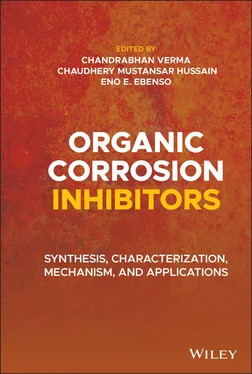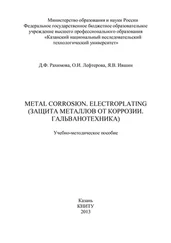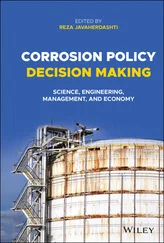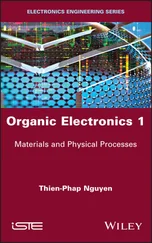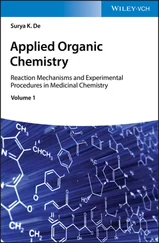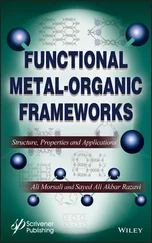5 5 Yan, Y., Dai, L., Zhang, L.H. et al. (2018). Investigation on the corrosion inhibition of two newly‐synthesized thioureas to mild steel in 1 mol/L HCl solution. Research on Chemical Intermediates 44: 3437–3454.
6 6 Chafiq, M., Chaouiki, A., Al‐Hadeethi, M.R. et al. (2020). A joint experimental and theoretical investigation of the corrosion inhibition behavior and mechanism of hydrazone derivatives for mild steel in HCl solution. Colloids and Surfaces A: Physicochemical and Engineering Aspects 610: 125744.
7 7 Rbaa, M., Dohare, P., Berisha, A. et al. (2020). New Epoxy sugar based glucose derivatives as eco friendly corrosion inhibitors for the carbon steel in 1.0 M HCl: Experimental and theoretical investigations. Journal of Alloys and Compounds 833: 154949.
8 8 Gouron, A., Le Mapihan, K., Camperos, S. et al. (2018). New insights in self‐assembled monolayer of imidazolines on iron oxide investigated by DFT. Applied Surface Science 456: 437–444.
9 9 Belghiti, M.E., Echihi, S., Mahsoune, A. et al. (2018). Piperine derivatives as green corrosion inhibitors on iron surface; DFT, Monte Carlo dynamics study and complexation modes. Journal of Molecular Liquids 261: 62–75.
10 10 Dagdag, O., El Harfi, A., Cherkaoui, O. et al. (2019). Rheological, electrochemical, surface, DFT and molecular dynamics simulation studies on the anticorrosive properties of new epoxy monomer compound for steel in 1 M HCl solution. RSC Advances 9: 4454–4462.
11 11 Chafiq, M., Chaouiki, A., Lgaz, H. et al. (2020). Synthesis and corrosion inhibition evaluation of a new schiff base hydrazone for mild steel corrosion in HCl medium: electrochemical, DFT, and molecular dynamics simulations studies. Journal of Adhesion Science and Technology 34 (12): 1283–1314.
12 12 Khalil, S.M., Ali‐Shattle, E.E., and Ali, N.M. (2013). A theoretical study of carbohydrates as corrosion inhibitors of iron. Zeitschrift für Naturforschung A 68: 581–586.
13 13 Saha, S.K. and Banerjee, P. (2015). A theoretical approach to understand the inhibition mechanism of steel corrosion with two aminobenzonitrile inhibitors. RSC Advances 5: 71120–71130.
14 14 Rahmani, R., Boukabcha, N., Chouaih, A. et al. (2018). On the molecular structure, vibrational spectra, HOMO‐LUMO, molecular electrostatic potential, UV–Vis, first order hyperpolarizability, and thermodynamic investigations of 3‐(4‐chlorophenyl)‐1‐(1yridine‐3‐yl) prop‐2‐en‐1‐one by quantum chemistry calculations. Journal of Molecular Structure 1155: 484–495.
15 15 Chaouiki, A., Lgaz, H., Chung, I.‐M. et al. (2018). Understanding corrosion inhibition of mild steel in acid medium by new benzonitriles: Insights from experimental and computational studies. Journal of Molecular Liquids 266: 603–616.
16 16 Peason, R. (1997). Chemical Hardness: Applications from Molecules to Solids (ed. R.G. Pearson). Weinheim: Wiley‐VCH https://doi.org/10.1002/3527606173.
17 17 Pearson, R.G. (1963). Hard and soft acids and bases. Journal of the American Chemical Society 85: 3533–3539.
18 18 Kovačević, N. and Kokalj, A. (2011). Analysis of molecular electronic structure of imidazole‐and benzimidazole‐based inhibitors: a simple recipe for qualitative estimation of chemical hardness. Corrosion Science 53: 909–921.
19 19 Koopmans, T. (1933). Ordering of wave functions and eigenenergies to the individual electrons of an atom. Physica 1: 104–113.
20 20 Hohenberg, P. and Kohn, W. (1964). Inhomogeneous electron gas. Physical Review 136: B864.
21 21 Hohenberg, P. and Kohn, W. (1964). Density functional theory (DFT). Physical Review 136: B864.
22 22 Withnall, R., Chowdhry, B.Z., Bell, S., and Dines, T.J. (2007). Computational chemistry using modern electronic structure methods. Journal of Chemical Education 84: 1364.
23 23 Kohn, W. and Sham, L.J. (1965). Self‐consistent equations including exchange and correlation effects. Physical Review 140: A1133.
24 24 Slater, J.C. (1951). A simplification of the Hartree‐Fock method. Physical Review 81: 385.
25 25 Obot, I., Macdonald, D., and Gasem, Z. (2015). Density functional theory (DFT) as a powerful tool for designing new organic corrosion inhibitors. Part 1: an overview. Corrosion Science 99: 1–30.
26 26 Lee, C., Yang, W., and Parr, R.G. (1988). Development of the Colle‐Salvetti correlation‐energy formula into a functional of the electron density. Physical Review B 37: 785.
27 27 Sure, R. and Grimme, S. (2013). Corrected small basis set Hartree‐Fock method for large systems. Journal of Computational Chemistry 34: 1672–1685.
28 28 Inada, Y. and Orita, H. (2008). Efficiency of numerical basis sets for predicting the binding energies of hydrogen bonded complexes: evidence of small basis set superposition error compared to Gaussian basis sets. Journal of Computational Chemistry 29: 225–232.
29 29 Cramer, C.J. (2013). Essentials of Computational Chemistry: Theories and Models. John Wiley & Sons.
30 30 Jensen, F. (2017). Introduction to Computational Chemistry. John wiley & sons.
31 31 Frank, J. (October 1999). Introduction to Computational Chemistry. Editorial Offices.
32 32 Young, D. (2004). Computational Chemistry: A Practical Guide for Applying Techniques to Real World Problems. John Wiley & Sons.
33 33 Chong, D.P. (1995). Recent Advances in Density Functional Methods. World Scientific.
34 34 Koopmans, T. (1934). Über die Zuordnung von Wellenfunktionen und Eigenwerten zu den einzelnen Elektronen eines Atoms. Physica 1: 104–113.
35 35 Parr, R.G. and Pearson, R.G. (1983). Absolute hardness: companion parameter to absolute electronegativity. Journal of the American Chemical Society 105: 7512–7516.
36 36 Morell, C., Gázquez, J.L., Vela, A. et al. (2014). Revisiting electroaccepting and electrodonating powers: proposals for local electrophilicity and local nucleophilicity descriptors. Physical Chemistry Chemical Physics 16: 26832–26842.
37 37 Lukovits, I., Kalman, E., and Zucchi, F. (2001). Corrosion inhibitors—correlation between electronic structure and efficiency. Corrosion 57: 3–8.
38 38 Lgaz, H., Chung, I.M., Albayati, M.R. et al. (2020). Improved corrosion resistance of mild steel in acidic solution by hydrazone derivatives: an experimental and computational study. Arabian Journal of Chemistry 13: 2934–2954.
39 39 Lgaz, H., Salghi, R., Masroor, S. et al. (2020). Assessing corrosion inhibition characteristics of hydrazone derivatives on mild steel in HCl: Insights from electronic‐scale DFT and atomic‐scale molecular dynamics. Journal of Molecular Liquids 308: 112998.
40 40 Perdew, J.P., Burke, K., and Ernzerhof, M. (1996). Generalized gradient approximation made simple. Physical Review Letters 77: 3865.
41 41 Meller, J.A. Molecular Dynamics, e LS (2001).
42 42 Hansson, T., Oostenbrink, C., and van Gunsteren, W. (2002). Molecular dynamics simulations. Current Opinion in Structural Biology 12: 190–196.
43 43 Allen, M.P. (2004). Introduction to molecular dynamics simulation. Computational Soft Matter: From Synthetic Polymers to Proteins 23: 1–28.
44 44 Binder, K., Horbach, J., Kob, W. et al. (2004). Molecular dynamics simulations. Journal of Physics: Condensed Matter 16: S429.
45 45 Rapaport, D.C. (2004). The Art of Molecular Dynamics Simulation. Cambridge university press.
46 46 Mathews, D.H., Sabina, J., Zuker, M., and Turner, D.H. (1999). Expanded sequence dependence of thermodynamic parameters improves prediction of RNA secondary structure. Journal of molecular biology 288: 911–940.
47 47 Zuker, M. (2000). Calculating nucleic acid secondary structure. Current opinion in structural biology 10: 303–310.
48 48 Berendsen, H.J. (1999). Molecular dynamics simulations: The limits and beyond. In: Computational Molecular Dynamics: Challenges, Methods, Ideas (eds. M. Griebel, D.E. Keyes, R.M. Nieminen, et al.), 3–36. Springer.
Читать дальше
